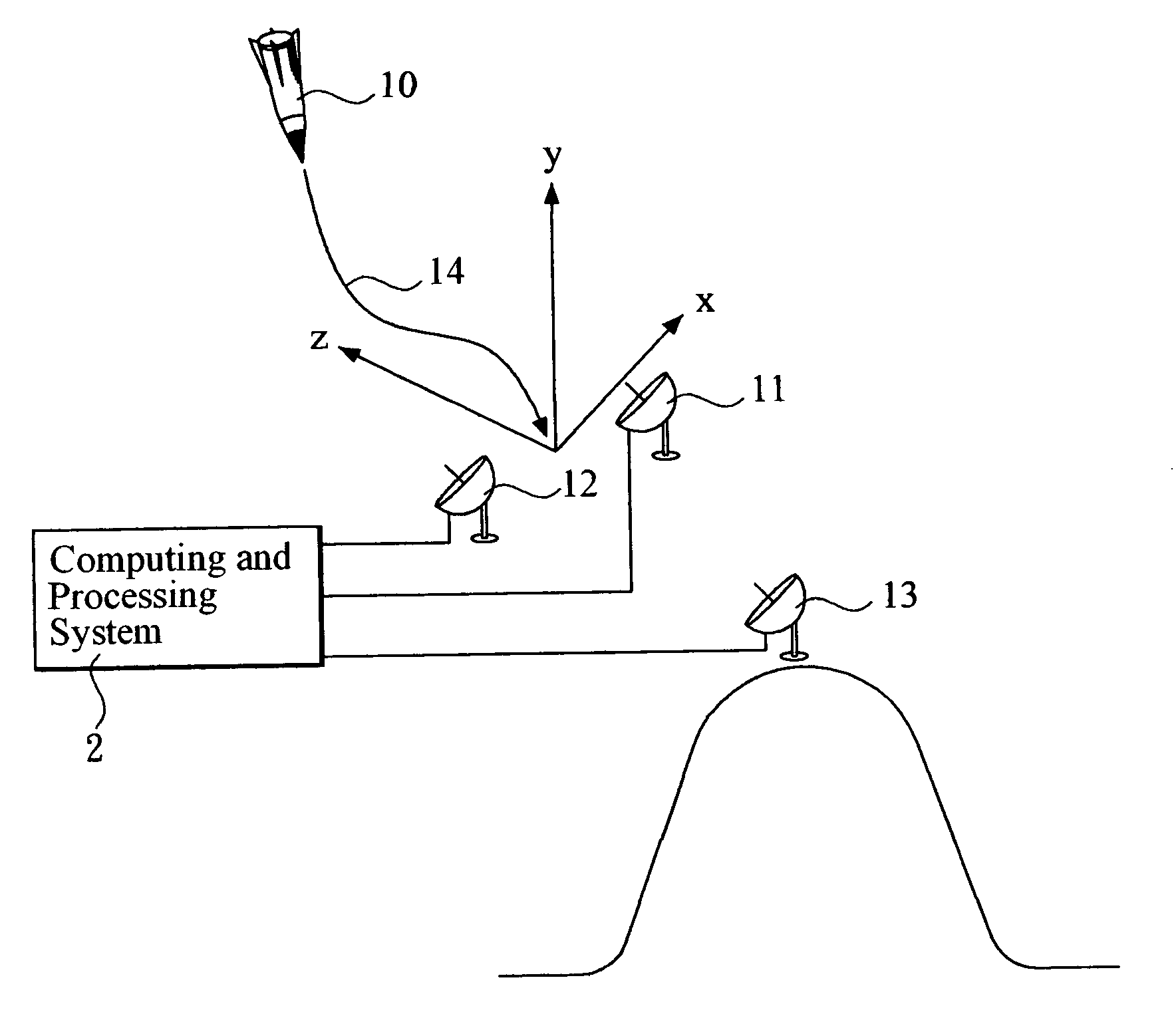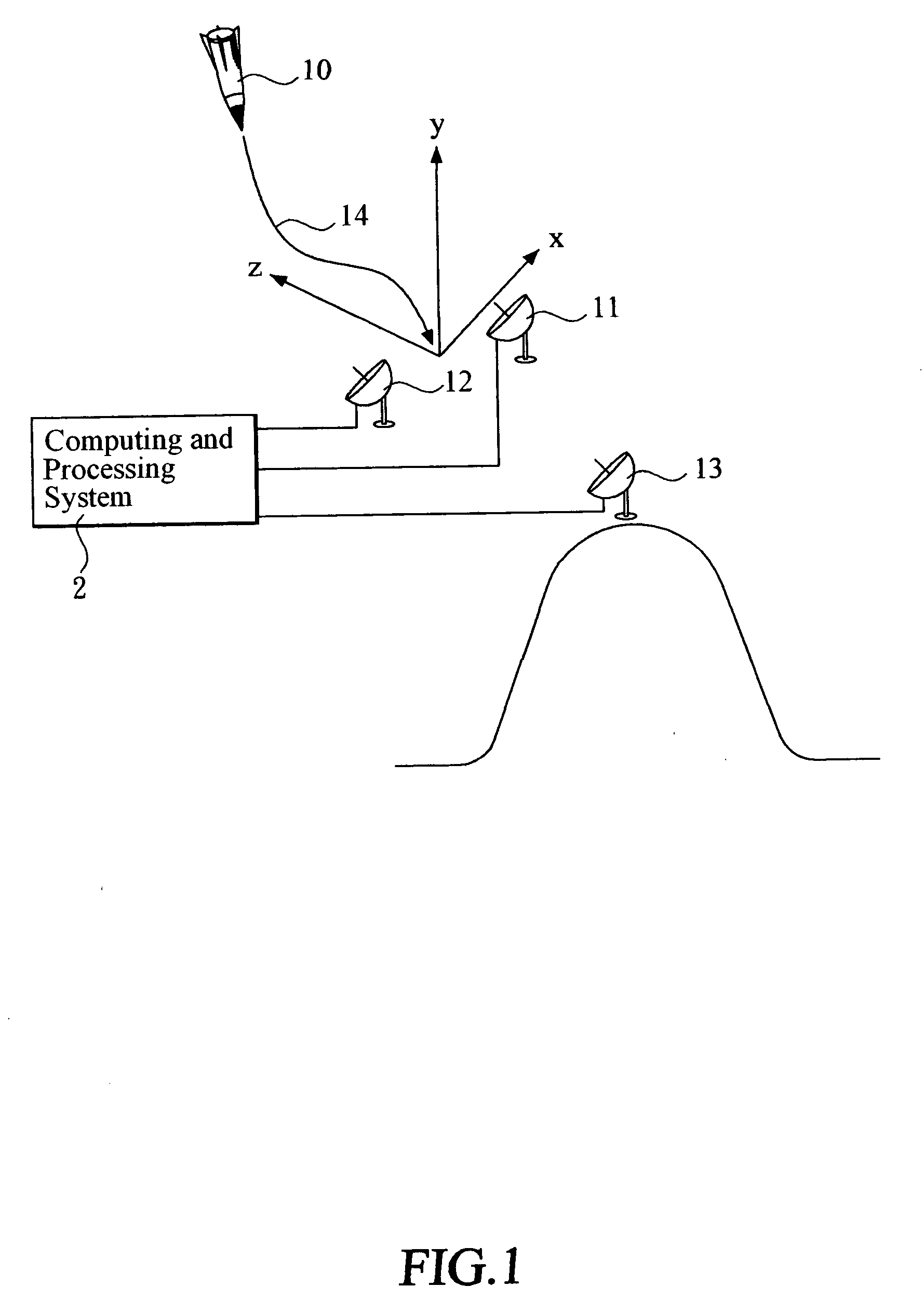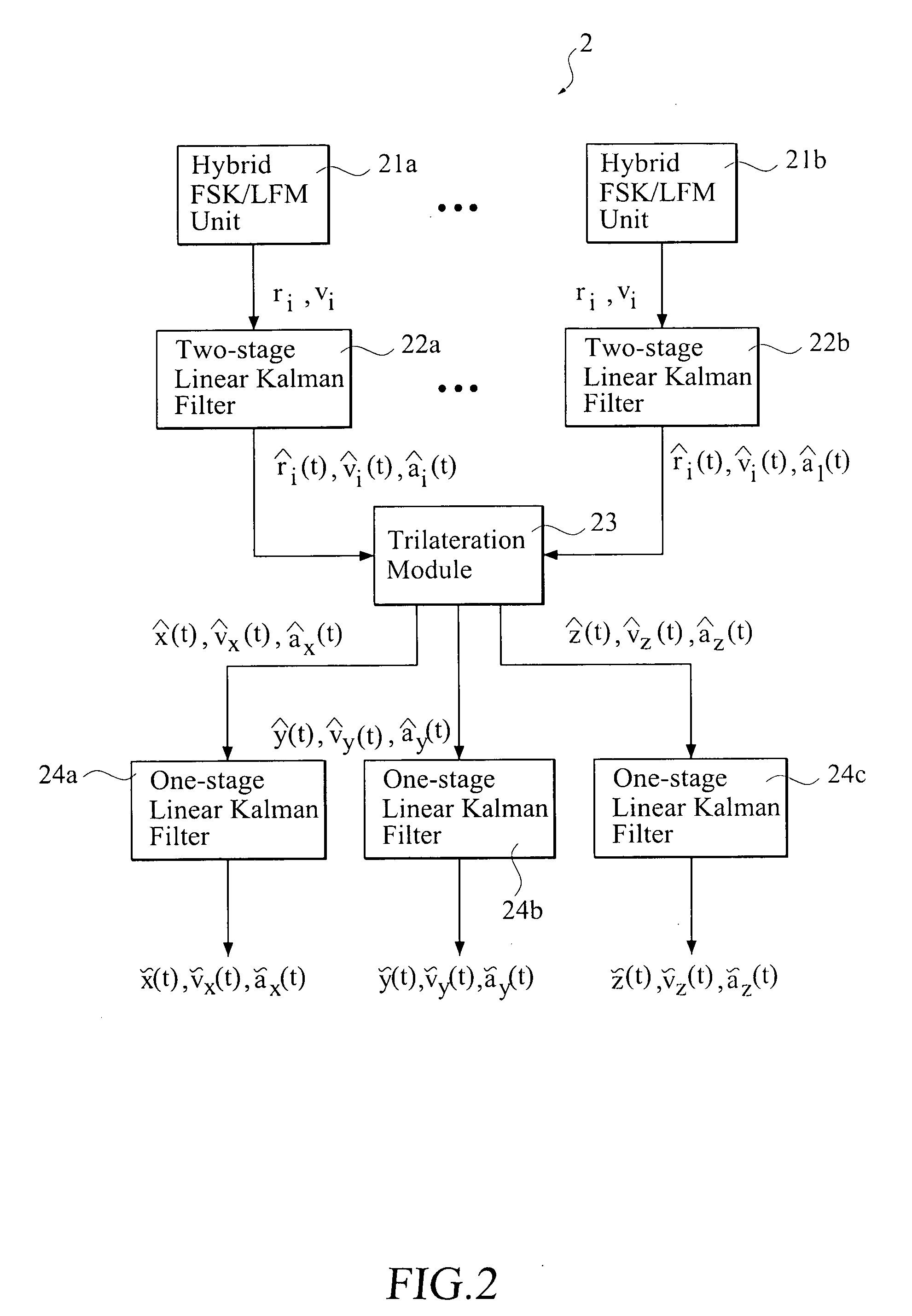Method and system for predicting air-to-surface target missile
- Summary
- Abstract
- Description
- Claims
- Application Information
AI Technical Summary
Benefits of technology
Problems solved by technology
Method used
Image
Examples
Embodiment Construction
[0050]With reference to the drawings and in particular to FIG. 1, which shows a schematic view of a scenario in which a target missile attacking a field deployed with three sensors, the target missile 10 is a missile fired by the enemy and is thus the target for interception by a missile defense system.
[0051]A first sensor 11, a second sensor 12, and a third sensor 13 are the devices, such as radar, for transmitting the detection signal and receiving the signal echoed from the target missile 10. The sensors 11, 12, 13 cover the field that is under attack by the target missile 10. The echo signals received by the sensors 11, 12, 13 are fed to a computing and processing system 2. Based on a pre-set algorithm, the computing and processing system 2 uses the echo signals to predict, i.e., compute, a trajectory 14 of the target missile 10.
[0052]Assume the target missile 10 moves with a fixed acceleration:
atx(t)=atx(0);
aty(t)=aty(0); and
atz(t)=atz(0),
where atx(0), aty(0) and atz(0) are ini...
PUM
 Login to View More
Login to View More Abstract
Description
Claims
Application Information
 Login to View More
Login to View More - R&D
- Intellectual Property
- Life Sciences
- Materials
- Tech Scout
- Unparalleled Data Quality
- Higher Quality Content
- 60% Fewer Hallucinations
Browse by: Latest US Patents, China's latest patents, Technical Efficacy Thesaurus, Application Domain, Technology Topic, Popular Technical Reports.
© 2025 PatSnap. All rights reserved.Legal|Privacy policy|Modern Slavery Act Transparency Statement|Sitemap|About US| Contact US: help@patsnap.com



